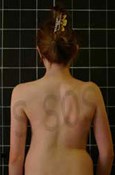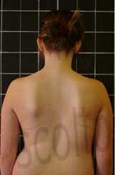Broadly speaking, childhood cases of scoliosis can be sorted into three different categories:
- Congenital scoliosis, where the spine is curved from birth
- Infantile scoliosis, where the curvature develops between 0 and 3 years of age
- Juvenile scoliosis, where the curvature develops between 4 and 10 years of age









































































































